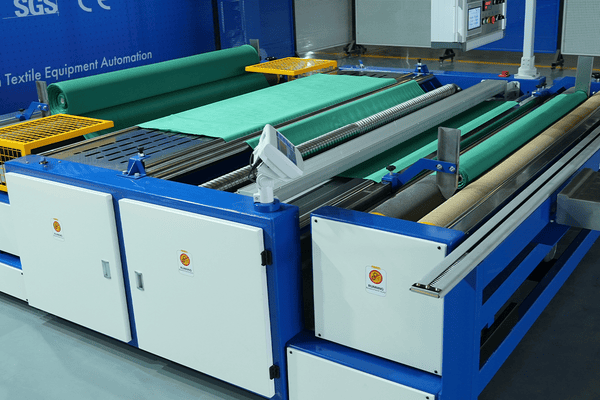I Events
When working with textiles, fabric relaxing plays a vital role in ensuring the fabric behaves predictably during the next stages of production. A fabric relaxing machine is designed to remove internal tension from fabrics, making them more stable and ready for further processing. But how do you choose the right fabric relaxing machine based on the fabric characteristics? Let’s break it down!
Applicable Fabric Types
Different fabrics require different relaxation methods. Here are some common fabric types and their applicable relaxation methods:1. Knitted Fabrics
Knitted fabrics are usually more elastic than woven fabrics. They tend to accumulate higher tension during the production process, causing the fabric to deform. Therefore, when relaxing knitted fabrics, it is necessary to use a relaxer that can gently release tension, while controlling temperature and humidity to ensure the stability of the fabric.2. Woven Fabrics
The structure of woven fabrics is relatively tight, and the focus of the relaxation process is to restore the fabric to its original size through appropriate heat and humidity. For woven fabrics, choosing a relaxer with more precise temperature and humidity control can help the fabric maintain stability.3. High Elastic Fabrics
High-elastic fabrics (such as spandex and lycra) have extremely strong elasticity and stretchability. Such fabrics need special attention to the temperature and humidity control during the relaxation process, otherwise, it is easy to cause the elasticity of the fabric to decrease or deform. Therefore, when choosing a relaxer, give priority to those that can accurately control environmental conditions.4. Silk and Other High-End Fabrics
High-end fabrics such as silk have extremely strict requirements on temperature and humidity. For the relaxation of such fabrics, it is necessary to choose a relaxer that can provide uniform temperature and humidity control to prevent surface damage or color fading of the fabric.Fabrics Not Suitable for Fabric Relaxing Machines
Not all fabrics are suitable for fabric relaxing machines. The following fabrics may not be suitable for relaxation:1. Natural Fibers (Such As Wool)
Natural fibers may shrink or deform after relaxation. Therefore, for some natural fibers, it is recommended to use a gentler relaxation method or even give up the use of relaxation machines and rely on air drying.2. Composite Fabrics
Composite fabrics are usually composed of multiple materials. If they are processed with a relaxation machine, the fabric may relax unevenly due to the different characteristics of each part. Therefore, they are not suitable for relaxation machines.Key Factors to Consider
When choosing a fabric relaxing machine, there are several factors to consider in addition to the type of fabric.1. Temperature and Humidity Control
A good temperature and humidity control system is the core of a fabric relaxing machine. The accuracy of temperature and humidity control directly affects the relaxation effect of the fabric. Therefore, when purchasing a fabric relaxing machine, you need to pay special attention to its temperature and humidity control performance.2. Processing Capacity and Speed
Different production lines have different requirements for the processing capacity and speed of the fabric relaxing machine. For efficient production lines, it is necessary to choose equipment with faster processing speed while maintaining the quality of relaxation. For small batch production, equipment with slower processing speed but more precise control can be selected.3. Energy Efficiency and Environmental Protection
In the current industrial environment, energy efficiency and environmental protection have become increasingly important considerations. Choosing a fabric-relaxing machine with high energy efficiency and the ability to reduce energy consumption and exhaust emissions can not only save operating costs but also meet the requirements of modern environmental regulations.4. Ease of Operation
A fabric-relaxing machine that is easy to operate and highly intelligent can greatly reduce the difficulty of operation and improve production efficiency. Modern fabric relaxing machines are usually equipped with touch screens or automated control systems, and operators only need to make simple settings to complete the relaxation process.Maintenance and Care of Fabric Relaxing Machines
After choosing a suitable fabric relaxing machine, how to properly maintain and care for it is equally important. Regularly checking the temperature and humidity control system of the equipment, cleaning the filter, and checking the electrical system can effectively extend the service life of the equipment.
How to Choose a Relaxing Machine According to Production Needs?
According to different production needs, it is crucial to choose a suitable fabric relaxing machine. For small batch production, you can choose a fabric relaxing machine with simple operation and small equipment; for large-scale production lines, you need to choose equipment with strong processing capacity and fast speed.Conclusion
Choosing a suitable fabric relaxing machine can not only improve production efficiency but also ensure the quality of fabrics. Understanding the characteristics of different fabrics and choosing a suitable fabric relaxing machine based on these characteristics is the key to ensuring smooth production. I hope this article can help you make a wise decision when choosing a relaxing machine.





